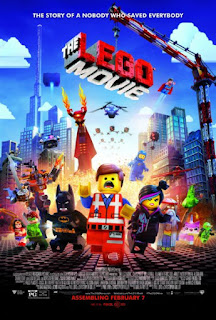Film Review: Jean Cocteau's La Belle et la Bête (1946)
Figure 1. Original Movie Poster
Jean Cocteau’s La Belle et la Bête, also known as Beauty and the Beast (1946), is a fairytale spectacle to behold. It is a tale of fantasy and romance, set within France, of a bankrupt merchant losing his possessions due to money troubles, and how he stumbles upon a mysterious castle within a forest, only to encounter The Beast. The Beast caught the merchant stealing from his garden, and said he would die for such a crime. The merchant then begged The Beast, resulting in a proposition. If the merchant wasn’t able to have one of his daughters replace him, he would then pay for his crimes. After travelling home, the merchant tells all to his three daughters and only son. Belle, the beauty, being the kindest one of all three sisters, rode out into the night to take her father’s place, as she is most loyal to him. The story then continues with the development of the relationship between Belle and The Beast.
Figure 2. Candelabra held by human arms
Cocteau’s rendition of an all time classic fairytale has been noted as a cinematic masterpiece, where this magical surrealist environment can offer a sense of escapism to the adult audience. With a candlelit entranceway where the lights are held out by human arms, and talking doorways, it is no wonder that this is a mysterious cursed dwelling. It is even emphasised by Bosley Crowther, “The settings are likewise expressive, many of the exteriors having been filmed for rare architectural vignettes at Raray, one of the most beautiful palaces and parks in all France.” (Crowther, 1947) Due to Cocteau’s sense of elegance and style, it is clear that his vision of an extravagant and mystical atmosphere was achieved through location and careful thought put into the set design, including his matte paintings with expressive brush strokes.
Comparing it to Disney’s take on the fictional fantasy, the film has more adult tones. As Roger Ebert states, “Cocteau uses haunting images and bold Freudian symbols to suggest that emotions are at a boil in the subconscious of his characters.” (Ebert, 1999) As the statues eyes and voices of the doors are continuously following Belle, this could be a symbol as to how attached The Beast is to her. The sense of symbolism within certain scenes evokes a sensuality of the situation, but it isn’t completely prominent to audiences there simply for viewing pleasure.
Figure 3. Belle and The Beast's encounter at dinner
What is also striking about the film is the moral and how the characters develop through this. As Mark Bourne suggests, “Cocteau's powerful personal vision made art out of a home-grown fable in which brutal, bestial ugliness, with blood on its claws, can vanish when faced with steadfast virtue, honour, and beauty (physical and otherwise).” (Bourne, 2003) It is through this moral that we truly review the character development in some, Bella and The Beast being the main examples. It is well known that at the beginning of their adventure, Belle is somewhat repulsed by The Beast at first, and of course, who could ever love a beast? We even get a clear understanding of how she will refuse to marry him, even to the point of the audience whispering aw at her bluntness. But then that’s what composes Belle to be the good-willed character that she is. And as the film progresses, we notice The Beast becoming kinder, and more open to this beauty, allowing her into the darker depths of his being. And thus, provides us with staggering performances from Jean Marais, landing 3 roles at the same time within the film, and Josette Day playing Belle herself.
It is no wonder that this film is a fantastical piece of cinema. As James Travers summarises, “Jean Cocteau's La Belle et la Bête is that rarest thing in cinema, a film that has the ability to transport an adult spectator into the realm of childhood imagination without ever appearing twee or childish.” La Belle at la Bête is certainly a spectacle to behold, if one wishes to escape their reality even just for a little while.
Bibliography:
Crowther, B. (1947) 'MOVIE REVIEW: La Belle et la Bete (1946) - THE SCREEN IN REVIEW' (1947) In: http://www.nytimes.com/ 24.12.47 [Online] At: http://www.nytimes.com/movie/review?res=9B03EFD71E3EEE3BBC4C51DFB467838C659EDE (Accessed on 11.11.14)
Ebert, R. (1999) 'Great Movie: Beauty and the Beast' (1999) In: http://www.rogerebert.com/ 26.10.99 [Online] At: http://www.rogerebert.com/reviews/great-movie-beauty-and-the-beast-1946 (Accessed on 11.11.14)
Bourne, M. (2003) 'Beauty and the Beast (La Belle et la Bête): The Criterion Collection' (2003) In: http://www.dvdjournal.com/ (2003) [Online] At: http://www.dvdjournal.com/reviews/b/beautyandthebeast_cc.shtml (Accessed on 11.11.14)
Travers, J. (n/a) ' La Belle et la bête (1946) - Beauty and the Beast' (n/a) In: http://frenchfilmsite.com/ (n/a) At: http://frenchfilmsite.com/review/1946-B/La_Belle_et_la_bete.html (Accessed on 11.11.14)
Illustrations:
Figure 1. Original Movie Poster (1946) [Poster] At: https://blogger.googleusercontent.com/img/b/R29vZ2xl/AVvXsEgoPro2JymNxpT9DGuz_Fd-M2dGBFe7_xFW0GsqUWriBduX28VEC2lzkc-mYHep3QeWQfIkwt2YB8r6WT20muK_i4QKPooTM3umR-DjEPNr_aBEwQEtkK56G7J4qtgA9pZ3BmG1d1GseBn6/s1600/1.jpg
Figure 2. Candelabra held by human arms (1946) [Movie Still] At: http://lecinemadughetto.files.wordpress.com/2013/10/candelabres.jpg
Figure 3. Belle and The Beast's encounter at dinner (1946) [Movie Still] At: http://www.avoir-alire.com/IMG/jpg/belb3.jpg






Hi Chelsea,
ReplyDeleteA well thought through review :)
Just be careful - you have used some 'alternative' words in there, which the spellchecker wouldn't pick out as they exist but mean something different to what you wanted them to! For example, you say 'the film has more adultery tones' - I think you just meant 'adult'! Also, you have used 'morale' where I think you just wanted moral...'morale' is a sense of enthusiasm, 'morals' are the principles by which you live.
Edited and spellchecked, hopefully I've got everything! Thanks so much for the advice Jackie :)
Delete